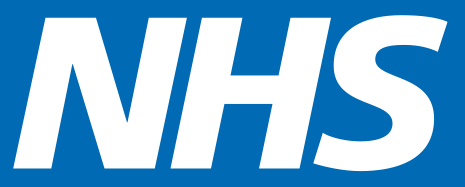|
This is about…
|
Developing a plan of action
|
||
|
Applicable to level(s)
|
|
Network of practices
|
Regional or national networks
|
|
Likely skills and resources needed
|
Clinical Management
|
||
|
Likely difficulty
|
 |
||
|
Likely time commitment
|
 |
||
|
Do…
|
Think logically about how you might link different barriers to and enablers of best practice to improvement approaches
|
||
|
Don’t…
|
Make this more complicated than you really need to
|
||
|
Illustrations
|
This is how we developed an approach to change practice. It is fairly complex because it was used for research purposes.
This study is from secondary care but shows how an approach to change practice was developed based upon barriers and enablers.
|
||
|
Helpful resources
|
This is a list of 93 behaviour change techniques20: We do not suggest that you learn it! However, you might wish to look through if you are looking for new ways to help change the behaviour of health professionals (or patients).
|
||
Earlier sections addressed ‘Why aren’t we achieving our goals?’ and ‘Which approaches can help us change?’ This section brings these together and considers how to develop an improvement package comprising one or more approaches to improvement based upon identified barriers and enablers and available resources.
Considering behaviour change techniques
Approaches to change practice can work in a number of different ways. For example, educational outreach visits can include various combinations of ‘active ingredients:’ being delivered by a credible source; shaping knowledge about a clinical topic; highlighting the positive (and negative) consequences of following a guideline recommendation (or not); providing comparative feedback on clinical practice; and developing an action plan for the practice.
These active ingredients, or behaviour change techniques,20 can be useful in designing interventions:
- Developing approaches to improve practice can sometimes become complicated and challenging within limited timelines and resources. Behaviour change techniques offer a checklist of active ingredients to consider.
- Behaviour change techniques can be linked to different barriers and enablers. For example, limited abilities to recall all relevant clinical information when making a prescribing decision can be helped by prompts and reminders. There is no rule book (yet) on how to match behaviour change techniques to barriers and enablers; some degree of judgment is usually needed.
- Different improvement approaches can include similar behaviour change techniques. For example, audit and feedback can also include all or most of those mentioned earlier for educational outreach visits. This is useful to bear in mind if resources are available for audit and feedback but not for educational outreach visits. Therefore, it may be possible to deliver similar active ingredients but within different improvement approaches. However, if you are using more than one improvement approach (e.g. both educational outreach visits and audit and feedback), some degree of duplication may help reinforce any critical behaviour change techniques.
Building approaches to improve practice
Key considerations in developing approaches to improve practice:
- Known evidence of effectiveness of the improvement approach (e.g. educational meetings), including what factors are likely to make them more, or less, effective
- Known barriers to and enablers of improvement
- Available resources and skills (e.g. routinely collected data for audit and feedback, skills in designing computerised prompts)
- Likely feasibility – how confident you are that the approach will work as intended
Table 5 illustrates how to combine the various components of an improvement approach.
Table 5. Illustrative components of an improvement approach
|
Barriers and enablers
|
Behaviour change techniques
|
Evidence-based approaches
|
||
|
Audit and feedback
|
Educational outreach visits
|
Computer prompts
|
||
|
Limited awareness or recall of treatment goals
|
Inform and prompt recall of clinical goals
|
 |
 |
 |
|
Limited awareness of clinical benefit
|
Emphasize positive consequences of changing clinical practice (and negative consequences of not doing so)
|
 |
 |
|
|
Limited insight into scope for improving practice
|
Comparative feedback
|
 |
 |
|
|
Inability to recall all relevant clinical information at time of consultation
|
Triggered prompts and reminders
|
|
|
 |
|
Risk of good intentions to change fading
|
Action planning
|
 |
 |
|
Piloting and refining your improvement approach
An improvement approach may look good on paper but one or more rounds of piloting and refinement are likely to help before it goes ‘live.’ This is particularly important if you are scaling up for a network of practices.
Suggestions for pilot work:
- Meet with practice staff, in a group or individually, your improvement approach is designed to help. Ask them to think aloud as they work through any instructions, processes or materials. Let them know that you particularly want to hear about problems that they might think that you don’t want to hear! Ask if they can suggest any solutions to these problems.
- Then probe people on (how likely is it to work in real life, seriously?), coherence (does the overall improvement approach make sense to them?), comprehensiveness (are all of the most important barriers addressed?) and fit (are there opportunities to embed the intervention within existing routines and resources?)
- Make adjustments as you proceed. If this is important enough, it is worth investing time in further meetings to get it right.
- Pilot the whole improvement approach or its separate components (e.g. computerised prompts) in a small number of practices. Again, actively probe for issues, especially around feasibility and fit with routines and resources.

